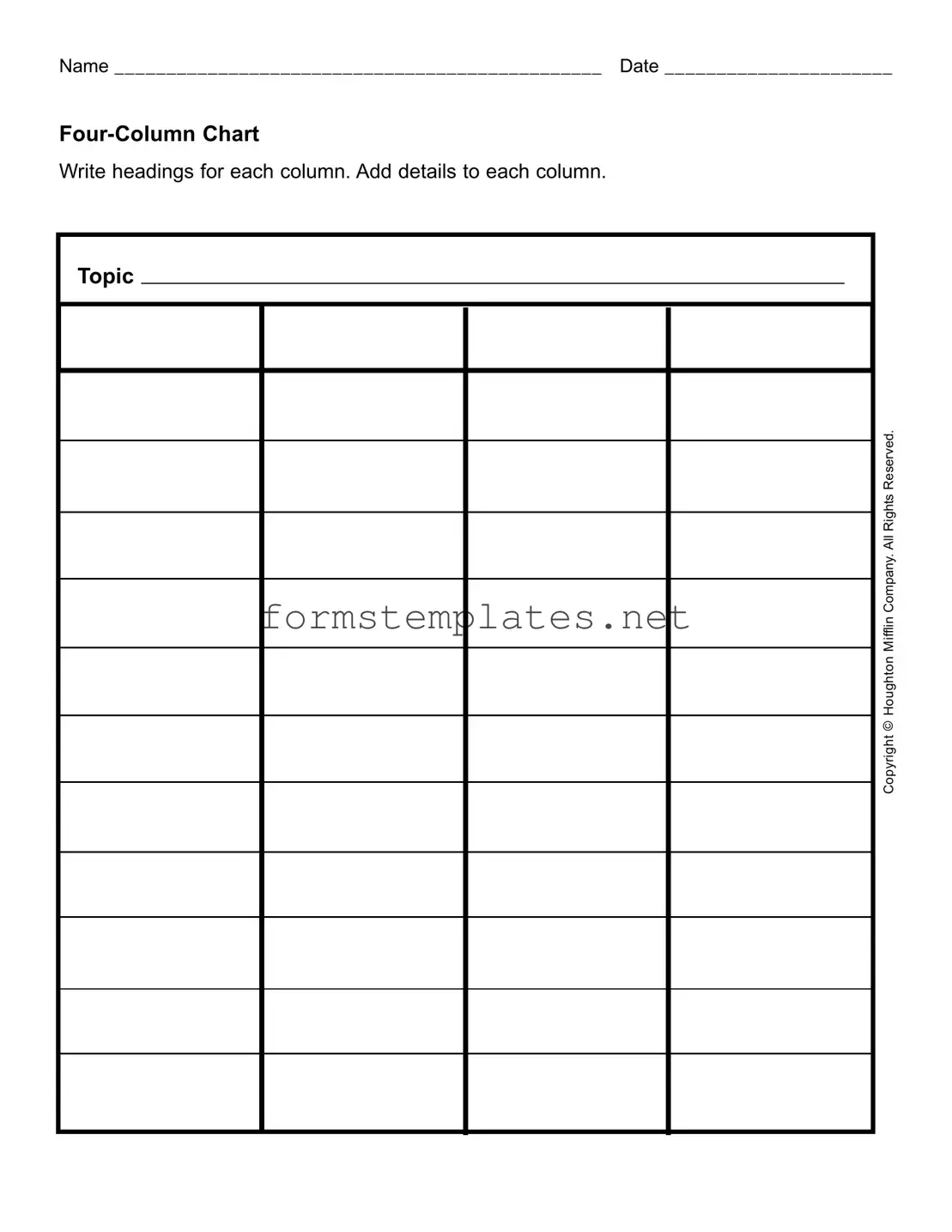The Four Column Chart form serves as a structured tool for organizing information. It allows individuals to break down complex topics into manageable parts. By dividing information into four distinct columns, users can clarify their thoughts, identify relationships, and enhance understanding of the subject matter.
To fill out the Four Column Chart form, follow these steps:
-
Start by writing your name and the date at the top of the form.
-
Label each of the four columns with appropriate headings that reflect the categories of information you want to organize.
-
Fill in each column with relevant details. Aim for clarity and conciseness.
-
Review the completed chart to ensure all information is accurate and well-organized.
What types of topics are suitable for the Four Column Chart?
The Four Column Chart is versatile and can be used for various topics, including:
-
Comparative analyses, such as comparing different theories or products.
-
Project planning, where tasks, deadlines, responsibilities, and resources can be outlined.
-
Research summaries, allowing for the organization of findings, sources, implications, and conclusions.
Can the Four Column Chart be used for group projects?
Yes, the Four Column Chart is an excellent tool for group projects. It facilitates collaboration by providing a visual representation of ideas and responsibilities. Groups can collectively fill out the chart, ensuring that all members contribute to the discussion and decision-making process.
While there is no strict format for the headings, they should be clear and descriptive. The headings should reflect the type of information being organized. For example, if you are comparing two products, you might use headings like "Product Features," "Advantages," "Disadvantages," and "Price." Tailor the headings to fit your specific needs.
How can the Four Column Chart enhance learning?
The Four Column Chart enhances learning by promoting active engagement with the material. By organizing information visually, learners can better identify patterns and connections. This method encourages critical thinking and aids in retention, making it easier to recall information later.
Are there any limitations to using the Four Column Chart?
While the Four Column Chart is a useful tool, it does have limitations. It may not capture complex relationships that require more nuanced analysis. Additionally, if the topic is too broad, the chart can become cluttered and difficult to read. Users should be mindful of these factors and consider supplementing the chart with other forms of analysis when necessary.

